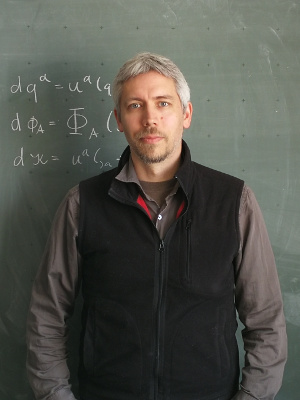The arrow of time in a relational universe A Technical Physics Talk by Tim Koslowski
April 5, 2022

Wednesday, 13 April 2022 @ 12PM in 149 Keck Center, or join us on Zoom.
Abstract: Relationalism posits that one must be able to describe the universe as a whole without reference to any external structure (clocks, rods, frame of reference, etc.) and should consequently also not obey any external arrow of time. Clocks, rods, reference frames etc. are defined through (suitably isolated) processes within the universe itself. I suggest that the arrow of time should be an analogous derived property as well and suggest to derive it from “direction of growth of local records.” This begs two questions: Do all these local arrows of time point in the same direction? and: Why do they? I give an answer by considering the relational description of the Newtonian N-body problem, which possesses a unique past point (“Janus point”) which splits almost all solutions into two halves. The solutions exhibit an emergent gravitational arrow of time that points away from this past point. One finds that the gravitational arrow of time pushes all local arrows of time in its direction and that entropic arrows of time as well as collapse arrows of time follow.